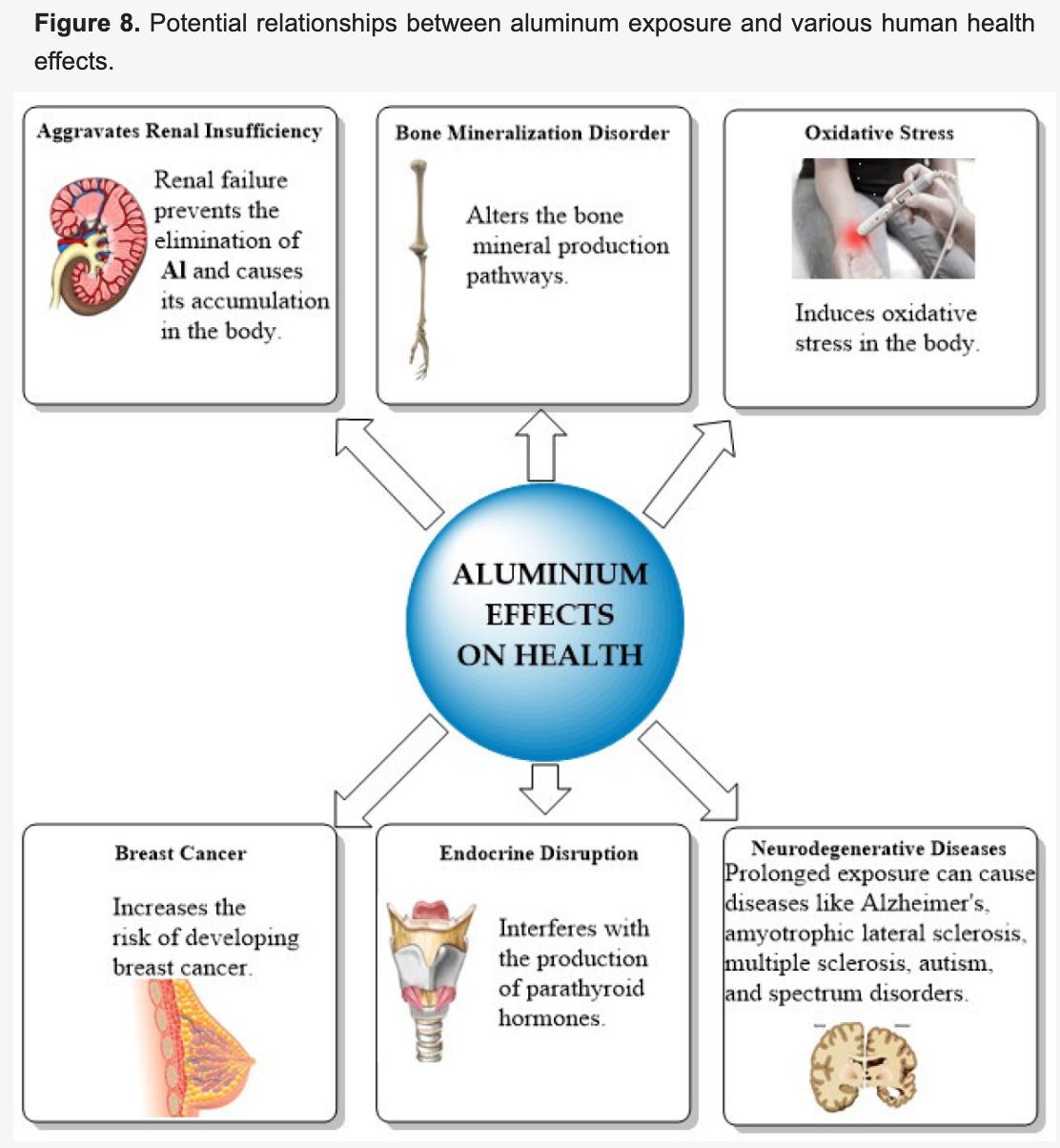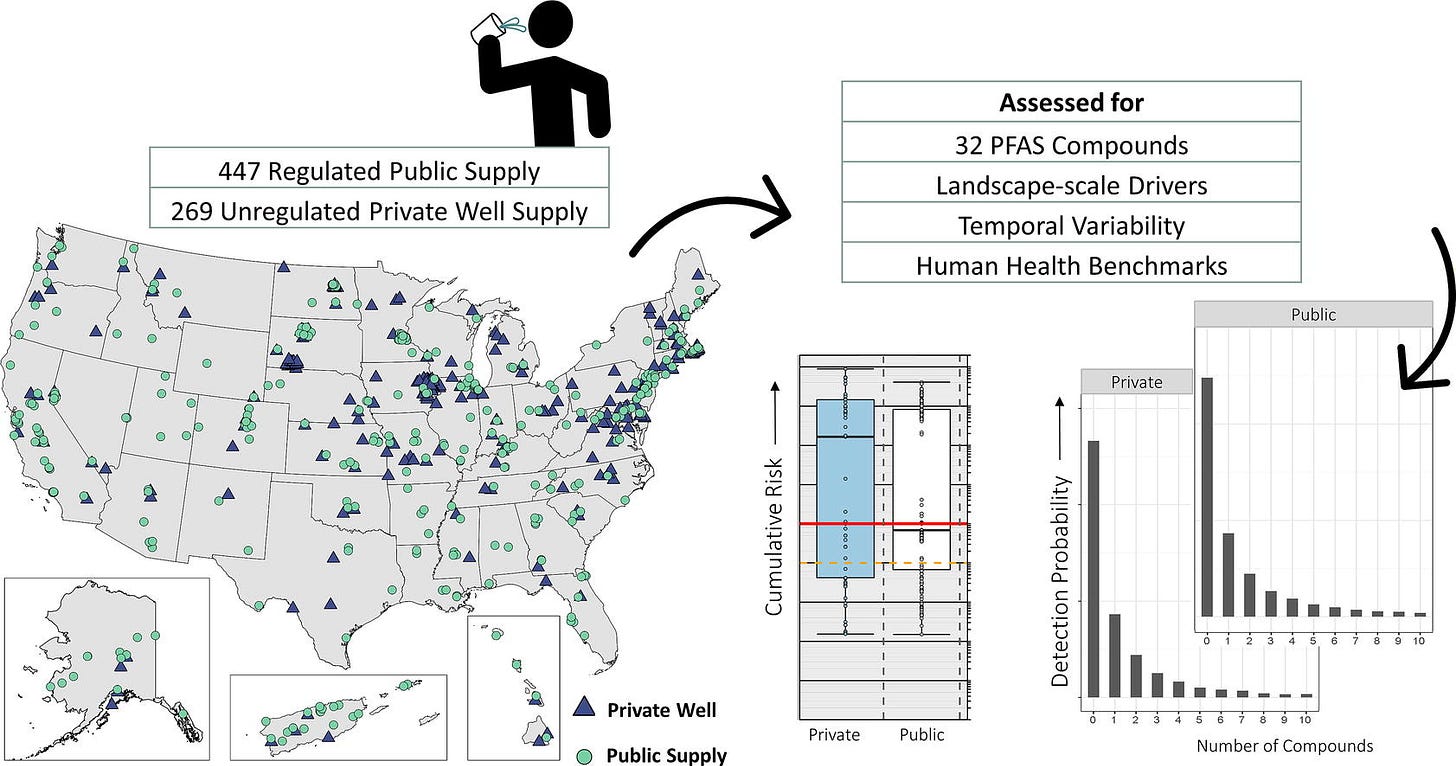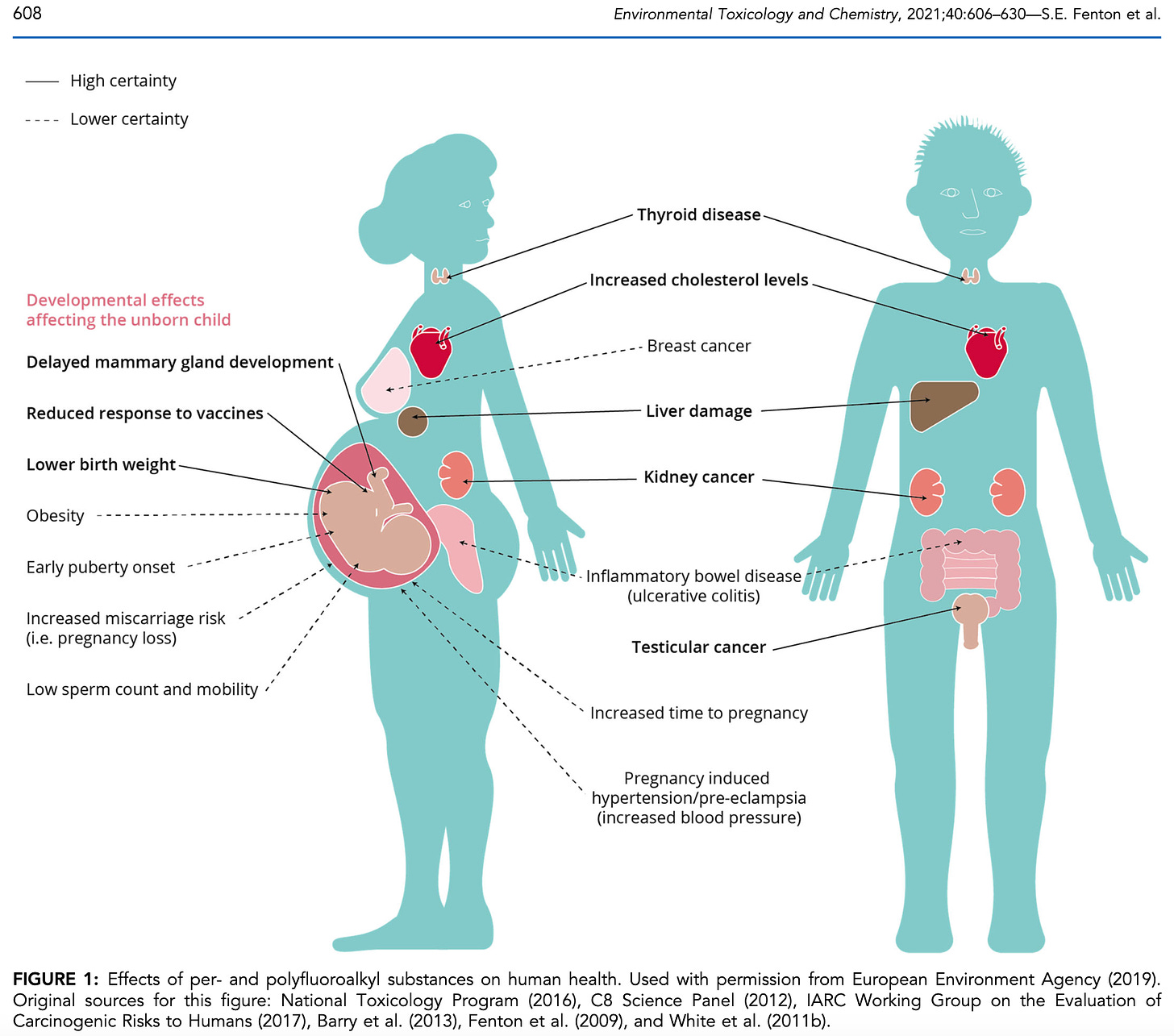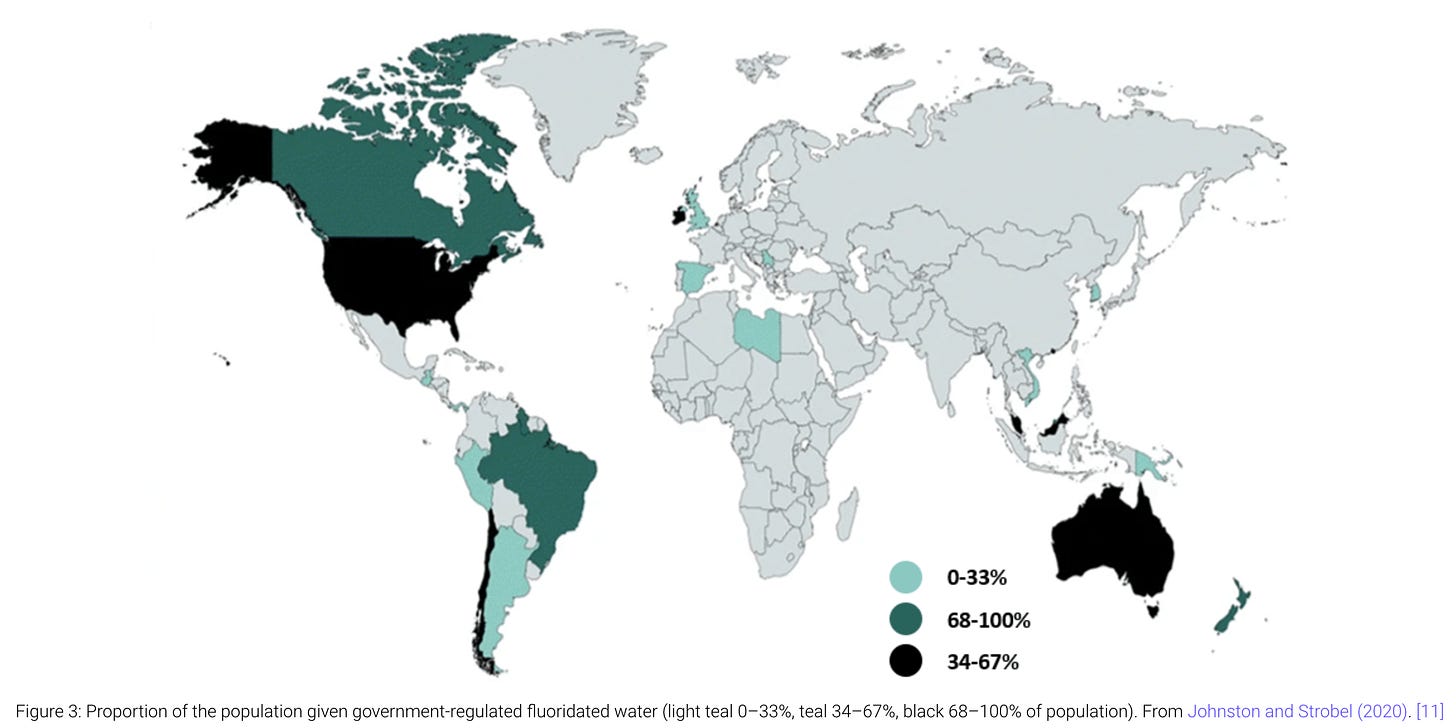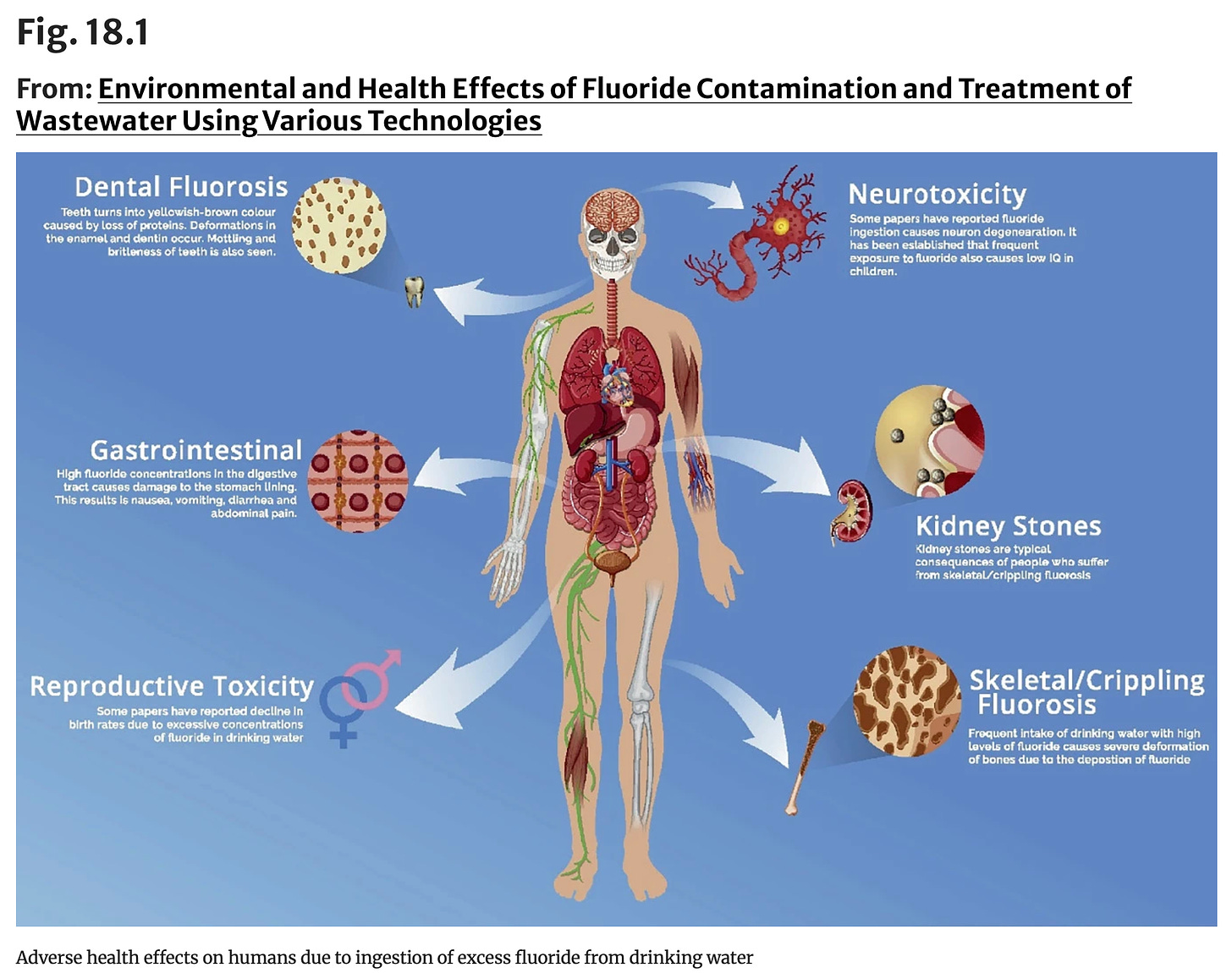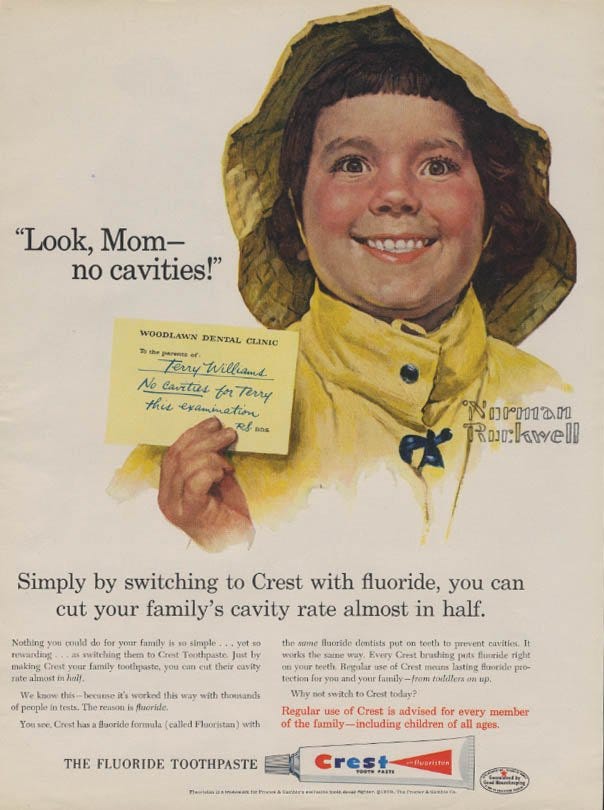Improving the Safety of the Public Water Supply
Fluoride among a sea of likely toxic additives and trace contaminants to consider
by Nicolas Hulscher, MPH
In the first Presidential Debate back in June 2024, President Trump declared his commitment to water quality, stating that he wants “absolutely immaculate clean water.”
This will be a challenging task, given the number of likely toxic additives and trace contaminants in our water supply. Municipal water treatment facilities commonly add several chemicals to tap water. These treatments include:
Disinfectants: Chemicals like chlorine and chloramine are added to eliminate harmful microorganisms. This results in disinfectant byproducts (DBPs), such as trihalomethanes (chloroform, bromodichloromethane, dibromochloromethane, and bromoform), that form when chlorine reacts with natural organic matter in water.
Coagulants and Flocculants: Substances such as aluminum sulfate and ferric chloride are used to aggregate suspended particles, making them easier to remove.
pH Adjusters: Compounds like limestone or sodium hydroxide are introduced to balance the water's pH, preventing corrosion in pipes and enhancing the effectiveness of disinfectants.
Corrosion Inhibitors: Chemicals such as orthophosphates are used to form protective coatings inside pipes, reducing the leaching of metals like lead and copper into the water.
Fluoride: Added in some regions to help prevent tooth decay.
Long term exposure to trihalomethanes (water chlorination byproducts) doubles the risk of bladder cancer.
Exposure to aluminum in drinking water has been shown to increase the risk of Alzheimer’s disease and result is numerous negative health effects:
Rondeau et al found that people exposed to aluminum levels above 0.1 mg/L in drinking water had about twice the risk of developing dementia and Alzheimer’s disease compared to those with lower exposure:
The relative risk of dementia adjusted for age, gender, educational level, place of residence and wine consumption was 2.03 (95 percent CI 1.23–3.34) for subjects exposed to aluminum concentration greater than 0.1 mg/l. This result was confirmed for Alzheimer’s disease (adjusted relative risk=2.20, 95 percent CI 1.24–3.89)
The CDC has reported that many cities have aluminum concentrations as high as 0.4–1 mg/L in their drinking water. Interestingly, an increase of 10 mg/day in silica intake from drinking water is associated with a reduced risk of dementia (adjusted relative risk = 0.89, P=0.036).
In addition to these common public water supply additives, per- and poly-fluoroalkyl substances (PFAS) are estimated to be present in 45% of US drinking water.
Fenton et al describes associations between exposure to specific PFAS and a variety of health effects, including altered immune and thyroid function, liver disease, lipid and insulin dysregulation, kidney disease, adverse reproductive and developmental outcomes, and cancer.
Fluoride is not considered an essential nutrient for any biological function in humans or animals. Approximately 72.3% of the U.S. population on community water systems receives fluoridated water. The CDC currently recommends a fluoride concentration in drinking water of 0.7 mg/L to prevent cavities, with a secondary safety standard of 2.0 mg/L. Physical intervention to remove fluoride from water is currently only required when fluoride concentrations exceed the EPA maximum contaminant level (MCL) of 4.0 mg/L. Boehmer et al found that between 2016 and 2021, approximately 83.7% of the time, people served by fluoridated water systems received water with fluoride levels between 0.6 mg/L and 2.0 mg/L. This implies that a significant number of Americans likely receive fluoride levels above 1.5 mg/L, which is the World Health Organization’s safe limit for fluoride. In Europe, only Ireland, Poland, Serbia, Spain, and the UK fluoridate their water. Most developed countries do not consume artificially fluoridated water.
The U.S. uses fluoride derived from industrial byproducts for water fluoridation:
Three chemicals are used to fluoridate drinking water in the U.S: sodium fluoride (NaF); sodium fluorosilicate (Na2SiF6); and fluorosilicic acid (H2SiF6). Fluorosilicic acid is a byproduct of the manufacture of phosphate fertilizer. It is recovered as a vapor, which ensures a high degree of purity. Both sodium fluoride and sodium fluorosilicate are made from fluorosilicic acid recovered in this manner. Sodium fluorosilicate is created by neutralizing fluorosilicic acid with caustic soda, itself a water treatment chemical. Sodium fluoride is created by neutralizing fluorosilicic acid with sodium chloride, common salt.
Various deleterious health outcomes can occur if water fluoride concentration is above 1.5 mg/L (within the CDC’s safety standard). Kumar et al summarized the major adverse health effects on human beings due to the ingestion of excess fluoride through drinking water (above 1.5 mg/L):
A recent U.S. Department of Health and Human Services National Toxicology Program report concluded that drinking water containing more than 1.5 mg/L of fluoride is consistently associated with lower IQs (-2 to -5) in kids. The report found 72 studies that examined fluoride exposure's impact on children's IQ. Among 19 high-quality studies, 18 reported an inverse association between estimated fluoride exposure and IQ in children. Additionally, 46 of 53 low-quality studies also found an inverse relationship. Some negative health outcomes of fluoride exposure can likely still happen at concentrations lower than 1.5 mg/L.
A new Cochrane review found that water fluoridation has only a minimal effect on the reduction in dental caries and that the benefits of fluoride in water supplies may be smaller than they were before the widespread addition of fluoride to toothpaste.
A comprehensive review by Hujoel reveals the private interests that resulted in the wide adoption of fluoride in the 1950s. Between 1942 and 1949, the American Dental Association (ADA) engaged in significant reversals concerning three key points: the safety of topical fluoride, the role of micronutrient deficiencies in dental caries, and dietary recommendations for dental health. The ADA initially viewed fluoride with caution, associating it with potential toxicity. However, by 1947, the ADA reversed its stance and endorsed fluoride for widespread dental use, despite the absence of new safety data. The Sugar Research Foundation (SRF) played a significant role in promoting fluoride, as its research agenda aimed to protect sugar markets by shifting attention away from the harmful effects of sugar and carbohydrates on dental health. The SRF funded research and conferences that advocated for fluoride as a means to prevent dental caries, effectively shielding sugar consumption from scrutiny. The ADA, influenced by private interests and political pressures, began promoting fluoride as a public health measure, even though evidence on its broader safety remained incomplete. Additionally, organizations such as the Kellogg Foundation, known for its cereal production, had representatives involved in key ADA committees. This convergence of interests between the sugar, cereal, and dental industries, along with the ADA's pivot away from carbohydrate restriction, helped usher in the era of fluoride-supplemented, high-carbohydrate diets.
The narrow range between fluoride concentrations that provide purported benefits (0.7 mg/L) and those that pose risks (>1.5 mg/L) presents concerns, especially if fluctuations in concentration occur.
Fluoride is naturally present in the environment and most natural water sources, including bottled waters, and thus can’t be completely removed from the water supply. Some bottled water manufacturers artificially add fluoride to their water or source their water from fluoridated public water systems. Approximately 42% of American children are drinking bottled waters. Johnson and DeBiase found that 95% of the bottled water analyzed (n=65) did not label fluoride content. If there is meaningful public health policy on fluoride, the bottled water industry will have to be properly managed with respect to accurate fluoride testing and labelling.
Since it’s impossible to completely remove fluoride from the environment, gathering precise data on the number of Americans exposed to fluoride concentrations above 1.5 mg/L should be a first priority to identify and protect high-risk populations. Another key policy should be reducing the EPA maximum contaminant level (MCL) for fluoride in public drinking water systems from 4 mg/L to <0.7 mg/L, which would effectively enforce physical intervention to remove unsafe levels of fluoride and discourage artificial supplementation. In avoiding autocracy, this approach could be a first step in collaboration with multiple stakeholders that may disagree with a complete water fluoridation ban, even if it’s indicated. Lastly, we should keep in mind that fluoride is only one element among the sea of other water treatment additives and contaminants that present similar, if not worse, negative health outcomes. To drive meaningful improvements in population health, we need a broader perspective on water and public health safety. Additionally, efforts to enhance water safety should encompass both tap and bottled water.
Nicolas Hulscher, MPH
Epidemiologist and Foundation Administrator, McCullough Foundation
www.mcculloughfnd.org
Please consider following the McCullough Foundation and Nicolas Hulscher on X (formerly Twitter) for further content.



